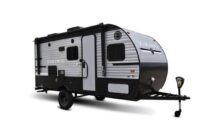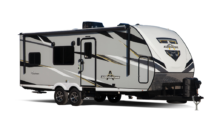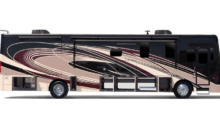2022 Coachman Brookstone FIFTH WHEELS Propane Overview Owner’s Manual

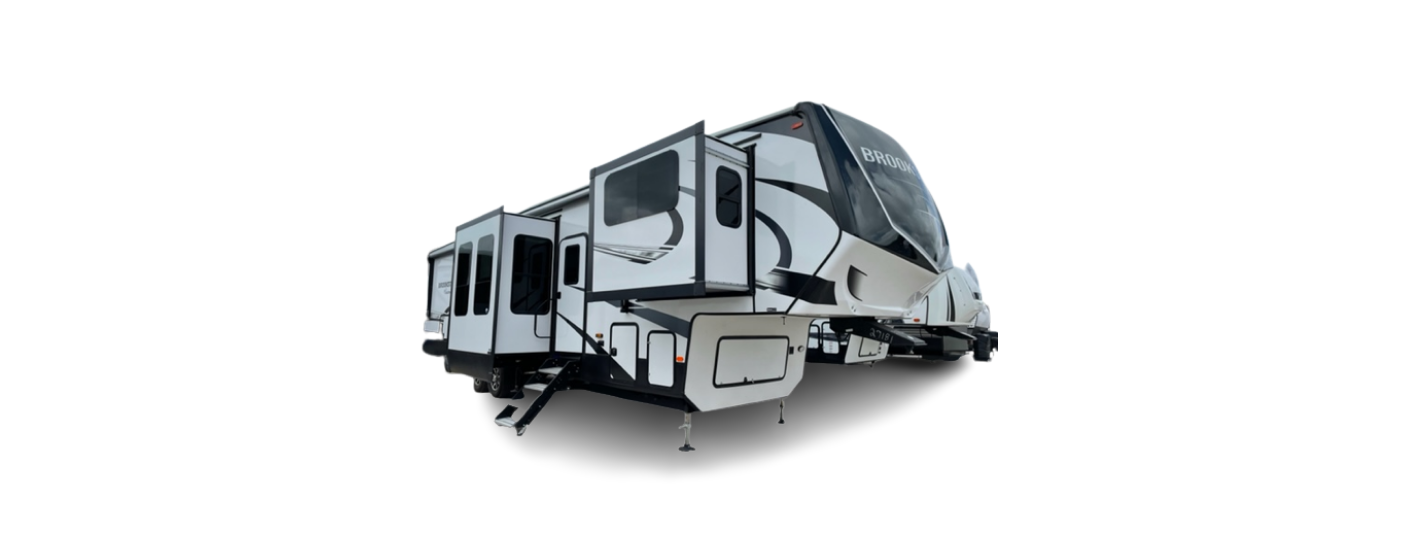


2022 Coachman Brookstone FIFTH WHEELS Propane Overview

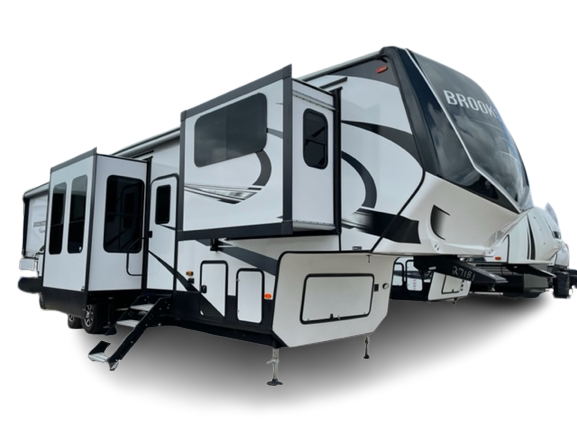
Propane Overview
Propane is a colorless and odorless gas that, when under pressure, is in a liquefied state. If you smell propane in or around your RV, quickly and carefully perform the procedure listed on the safety labels affixed to your RV or listed below. The propane gas system in your RV supplies fuel for the gas range/oven, water heater, furnace, and refrigerator (while in gas mode). When used and handled properly, this system is safe and economical and provides modern living conveniences wherever you travel. Strictly adhere to all propane warnings printed on propane appliances and devices. Hand tighten the main propane gas system valves only, do not use a wrench or pliers as over tightening may damage the valve seals and cause them to leak. The propane system is comprised of numerous components such as the propane tank, hoses, propane gas regulator, and piping and copper tubing lines to each appliance. As part of your normal maintenance routine (at least once a year), have a qualified propane service technician perform an inspection of your entire propane system, including a system pressure test.
When your RV is in storage, it’s recommended that you turn OFF the gas supply to the unit.
MONITORING PROPANE LEVELS
The amount of propane remaining in the propane tank can be monitored by pressing the appropriate monitor buttons on the monitor panel or main multiplex system panel (if equipped).
Propane containers (also referred to as LP bottles) are used for the storage and delivery of propane gas. Propane containers are filled by weight, expressed in pounds. For filling, a qualified propane facility is required, and containers must be removed from the RV.New propane containers are filled with inert gas, which must be carefully purged before filling with propane.
The regulator reduces the pressure of the propane vapor from the pressure in the tank to the pressure required for use at the appliances. The regulator seldom requires service. Always protect it from the elements and extreme temperatures. The regulator has been preset by the manufacturer and adjustment should not be necessary. However, if an adjustment is required, do not attempt to adjust it yourself. Adjustment must be made with special equipment and by a qualified propane service technician. Has the regulator checked annually or sooner if you suspect a problem? A two-stage regulator performs the pressure-reducing function as previously described. This is accomplished in two stages. Two regulators are used in the same body to reduce the pressure of the propane in the tanks for use by the appliances in the camper. The two-stage regulator does not have to work as hard since the second stage receives consistent pressure rather than inlet pressure, which varies. The result is a safer and more efficient system and helps to eliminate problems such as freeze-up and pilot outages. Because air is required for proper operation of the regulator, it is very important that the regulator vent be kept free of dirt and debris. For this reason, it is necessary to keep the vent facing downward and the regulator covered to protect it from contamination. A toothbrush can be used to clean the vent if it becomes clogged by foreign matter. During cold weather, it’s important to keep ice from forming in the regulator. Ice can prevent the flow of propane to your appliances. Have your propane supplier add anhydrous methanol when filling your tank for use during cold weather. Regulator freeze-up can occur in any weather if there is moisture in the tank or if the tank has been over-filled. Always use moisture-free propane. If moisture has entered the tank, have the tank purged, or have anhydrous methanol added by an authorized propane supplier.
- Be sure all the appliances have been turned off (including pilot lights if applicable) and that there is no propane flowing into the system.
- Be sure that the system is free of leaks .
- Open the propane tank service valve slowly, (DO NOT SNAP IT OPEN). If opened too quickly, due to the sudden pressure fluctuation, the excess flow control valve may mistakenly sense that the system has been damaged and shut off the propane.
- Wait for at least 15 seconds before lighting any pilot light or appliance.
Following this procedure should create a normal flow of propane by allowing the excess flow control to settle in slowly. On models equipped with optional double tanks and optional automatic changeover, both hoses from the individual propane tanks are connected by a tee, to the regulator. This tee contains a disc check valve that prevents the propane from escaping when an empty tank is disconnected to be refilled.
EXTERIOR PROPANE CONNECTION
WARNING
Gas cooking appliances need fresh air for safe operation. Before operating, open vents or windows slightly or turn on the exhaust fan prior to using cooking appliances. Gas flames consume oxygen, which should be replaced to ensure proper combustion. Improper use may result in death or serious injury. When using this outdoor cooking area the vehicle must be level and stabilized. Do NOT violate manufacturers’ instructions on required clearances for cooking appliances during use. Do NOT store cooking appliances until cool to the touch. Can lead to a fire and explosion and result in death or serious injury.Do NOT fill propane container(s) to more than 80 percent of capacity. A properly filled container contains approximately 80 percent of its volume as liquid propane. Overfilling the propane container(s) can result in uncontrolled propane flow, which could lead to a fire or explosion and result in death or serious injury.Do NOT place propane containers inside the vehicle. Propane containers are equipped with safety devices that relieve excess pressure by discharging propane to the atmosphere. Propane gas is highly flammable. Can lead to a fire or explosion and result in death or serious injury. This propane piping system is designed for use with propane only. Do NOT connect natural gas to this system. Securely cap inlet when not connected for use. After turning on propane, except after normal container replacement, test propane piping and connections to appliances for leakage with soapy water or bubble solution Do not use products that contain ammonia or chlorine to test for leaks. May lead to a fire or explosion, which could result in death or serious injury.ALWAYS have an authorized propane supplier fill your propane tanks. When the propane container is being filled, Do NOT smoke, strike a match or ignite a lighter. A spark or flame could ignite fumes. Also, be sure all burner and pilot flames are extinguished and the supply valve is closed.If you detect a sulfur or ‘rotten egg’ odor, Do NOT turn on any appliances. Shut off all operating appliances. Extinguish any open flames, including cigarettes. Do NOT touch any electrical switches. Open windows and doors and exit the vehicle. Shut OFF the propane.To avoid possible problems, have your propane system checked at least once a year by an authorized service center and after each extended trip.
DANGER
NEVER use any other type of propane container than the one furnished with your RV. If the tank must be replaced, check with your dealer for specifications.Propane regulators must ALWAYS be installed with the regulator vent facing downward. Regulators that are not in compartments have been equipped with a protective cover. Be sure the regulator cover is kept in place to minimize vent blockage that could result in excessive propane pressure, causing fire or explosion.
IF YOU SMELL PROPANE:
1. Extinguish any open flames and all smoking materials.
2. Shut OFF the propane supply at the container valve(s) or propane supply connection.
3. Do NOT touch electrical switches.
4. Open doors and other ventilating openings.
5. Leave the area until the odor clears.
6. Have the propane system checked and leakage source corrected before using it again.
Ignition of flammable vapors could lead to a fire or explosion and result in death or serious injury.Do NOT use gas cooking appliances for comfort heating. May lead to carbon monoxide poisoning, which can lead to death or serious injury.All pilot lights, appliances and their igniters (see operating instructions) shall be turned OFF before refueling of motor fuel tanks and /or propane containers. May cause ignition of flammable vapors, which can lead to a fire or explosion and result in death or serious injury.Do NOT attempt to make repairs to the propane system or appliances except for simple maintenance and occasional tightening of a connection. ALWAYS take your vehicle to an authorized dealer for propane problems.Do NOT turn on the propane supply if you smell or suspect that there is a leak.
Recent Posts
VW Jetta Engine Fuse Box Diagram
Access the comprehensive 2010-2018 VW Jetta Passenger Fuse Box Diagram to troubleshoot electrical issues effectively.…
VW Jetta Passenger Fuse Box Diagram
Explore the comprehensive VW Jetta Passenger Fuse Box Diagram to troubleshoot electrical issues effectively. Understand…
2023 Ford F-150 Lightning Fuse Box Diagram
Under Hood Fuse Box Location Remove the front luggage compartment cover. Under Hood Fuse Box…
2022 Kawasaki NINJA H2 SX SE Brake Lever Adjuster Owner’s Manual
2022 Kawasaki NINJA H2 SX SE Brake Lever Adjuster Owner's Manual NOTICE Only adjust the front…
2023 Land Rover Range Rover Evoque Exiting The Vehicle Owners Manual
2023 Land Rover Range Rover Evoque Exiting The Vehicle SINGLE LOCKING WARNING Before exiting the…
2023 Land Rover Range Rover Evoque Front Seats Owners Manual
2023 Land Rover Range Rover Evoque Front Seats FRONT SEAT SAFETY Make sure to read…
